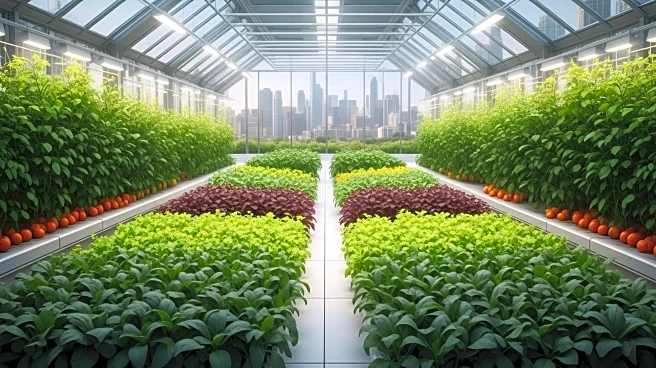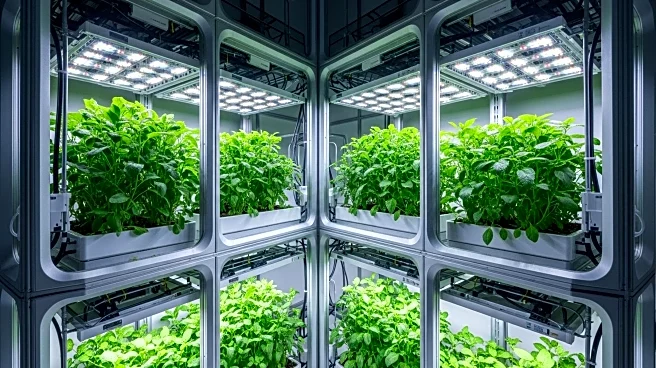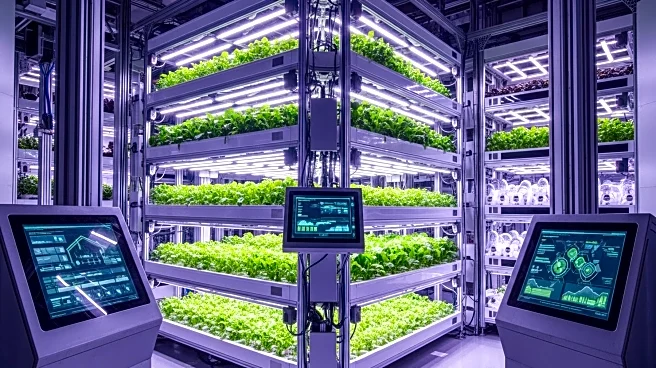What is the story about?
What's Happening?
The urban farming market in the United States is experiencing rapid growth, with the market size projected to increase from US$172.62 billion in 2024 to US$311.24 billion by 2032. Key players in this sector include UrbanFarmers AG, Urban Crop Solutions, AeroFarms, and others. Initiatives such as those by Urban American Farmer in Austin, Texas, aim to connect farmers with consumers and transform urban spaces into productive food-growing areas. Sweetwater Farms HTX in Houston focuses on integrating agriculture with education, providing fresh produce and learning opportunities. The market is expected to rise significantly due to the adoption of advanced farming technologies and strategies by key players.
Why It's Important?
The growth of the urban farming market is crucial for addressing food production needs as the global population is projected to reach 9.1 billion by 2050. This expansion supports the demand for sustainable and efficient farming practices, which are essential for meeting increased food requirements. Urban farming not only contributes to food security but also promotes environmental sustainability by reducing transportation emissions and encouraging local food consumption. The sector's growth presents opportunities for innovation in farming technologies and methods, potentially benefiting urban communities and the agricultural industry.
What's Next?
The urban farming market is anticipated to continue its upward trajectory, driven by technological advancements and strategic initiatives by industry leaders. As the market expands, stakeholders may focus on enhancing supply chain efficiencies and exploring new farming techniques such as hydroponics and aquaponics. The integration of urban farming into city planning and development could further support its growth, with potential collaborations between local governments and private enterprises to promote sustainable urban agriculture.
Beyond the Headlines
Urban farming represents a shift towards more sustainable urban living, with implications for city planning and community development. It encourages a rethinking of urban spaces, transforming them into productive areas that contribute to local economies and environmental health. The movement also highlights the importance of food education and community engagement in fostering a culture of sustainability and self-sufficiency.
AI Generated Content
Do you find this article useful?















